Solar Home Systems
All You Need to Know
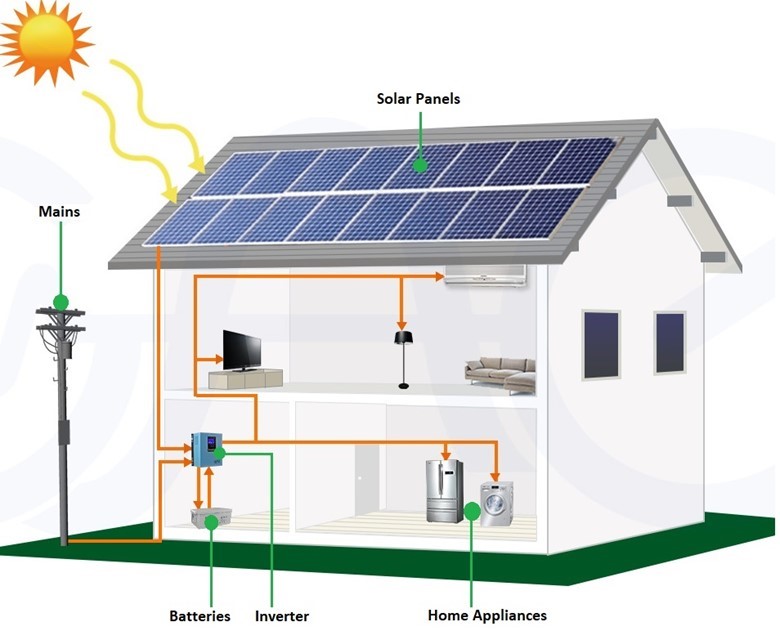
Reliable and affordable energy is essential for every household. With electricity costs continually rising and frequent power outages becoming more common, homeowners are increasingly encouraged to adopt energy efficiency measures and explore alternative energy solutions.
Solar power is one of the most effective alternatives—whether through grid-tied systems for connected homes or stand-alone systems for off-grid households. These systems integrate seamlessly with existing home electrical setups, and with the use of a DC/AC inverter, there is no need to rewire or purchase special “solar” appliances.
While a well-designed solar system can independently power all household appliances, the cost factor makes it practical to consider a hybrid solution that combines solar with grid power
- Lighting
- Television
- Fridge
- Microwave
- Water Pump
- Iron Box
- CCTV
- Electric Fence
- Pressure Cooker
- Home Theatre
Example of Solar Installation for a typical household
Before Solar Installation:
Let’s assume that the house relies 100% on KPLC power and consumes 8 kWh per day (8 token units per day).
The current power connection is directly from the grid to the house through the utility meter as shown below:
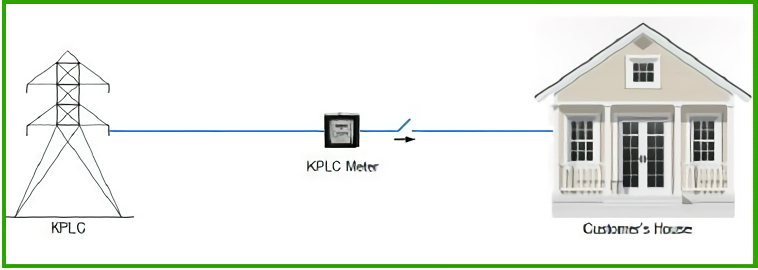
For a residential house, the typical consumption pattern (load profile) is as shown below. The power demand is lowest late at night and very early in the morning. It then fluctuates throughout the day, and tends to be highest in the evening hours between 5:00 p.m. and 10:00 p.m.
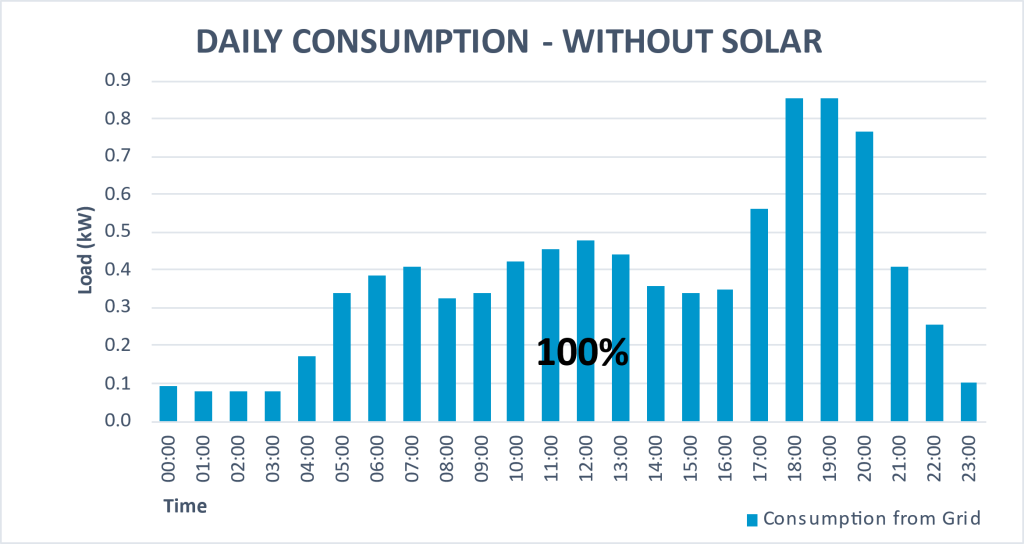
Solar Integration
Solar integration doesn’t mean installation of a totally separate electrical network. It is possible to integrate solar power into the existing electrical wiring for the grid to make a cost efficient, and dynamic power system.
The integration is done through an inverter, and the system will be as shown below:

After Solar Installation:
“Going solar” doesn’t have to be 100% transition from the grid. Depending on the reason for going solar, one can still maintain a certain % of their power consumption on the grid.
In this example, the objective is to have 85% energy from solar and 15% from the grid. To achieve this, it has been established (through sizing calculations) that a 2200 watts solar system with 5 kWh of battery storage is required. For more details on system sizing and costing, see our free guide on the cost of installing solar.
The resulting consumption and power generation pattern will be as shown below. Out of the total solar energy generated during the day, 44% is consumed directly while 41% is stored in the batteries to be used in the evening when the sun goes down. Once the batteries are fully discharged at night, the system automatically connects to the grid to supply the 15% energy required for the remaining part of the night, until the sun rises the following morning and the cycle repeats.
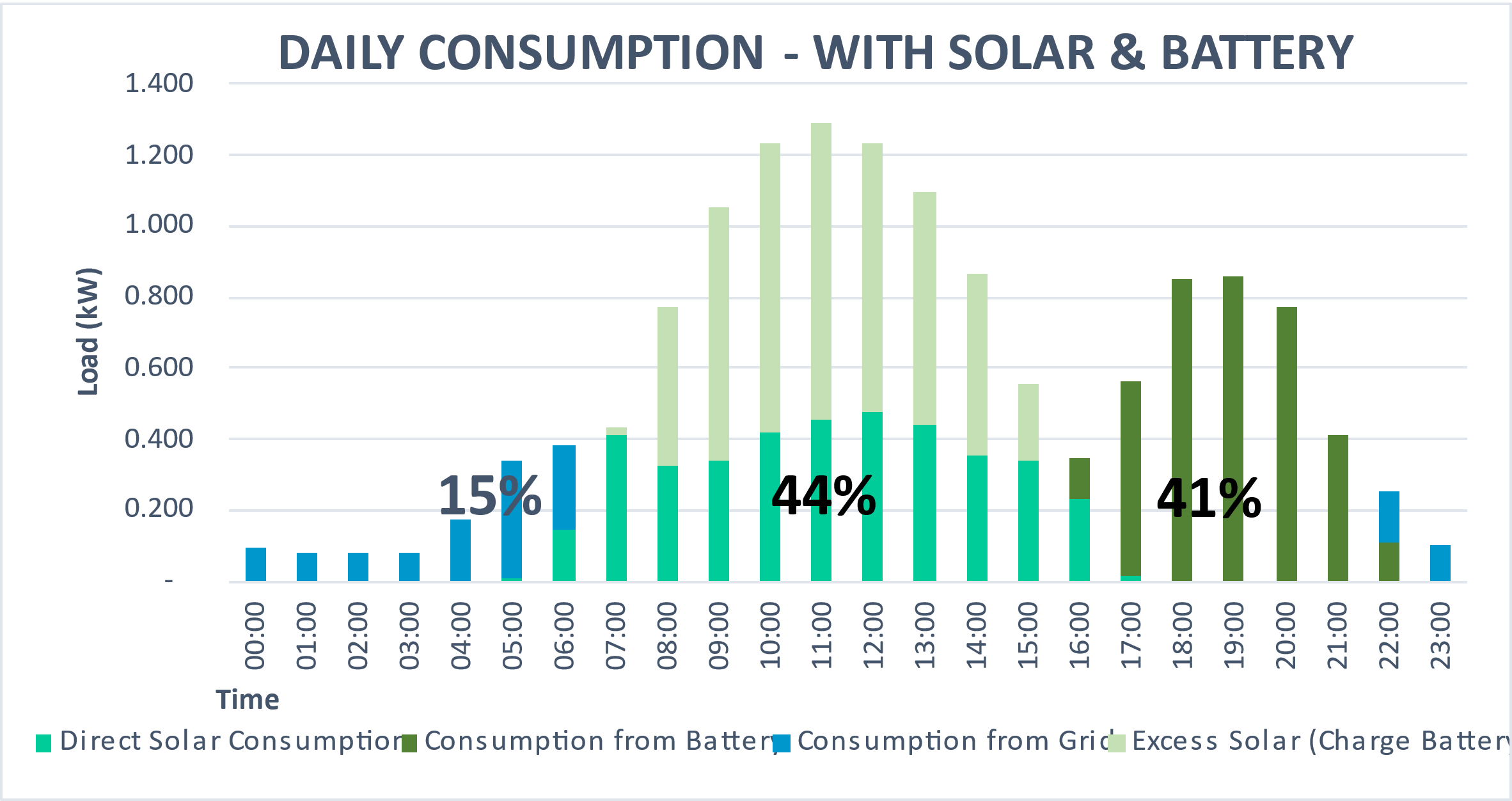
Energy Cost Comparison
Energy Cost without Solar
- Current Cost of energy 27 Kes/kWh
- Monthly Energy Consumption 240 kWh
- Current Average Monthly Bill 6,480 Kes
- Projected Annual Bill 77,760 Kes
Energy Cost with Solar
- Initial Cost of the Solar System 360,000 Kes
- Average Annual Energy Savings 66,096 Kes
- Average Monthly Energy Savings 5,508 Kes
- New Average Monthly Bill 972 Kes
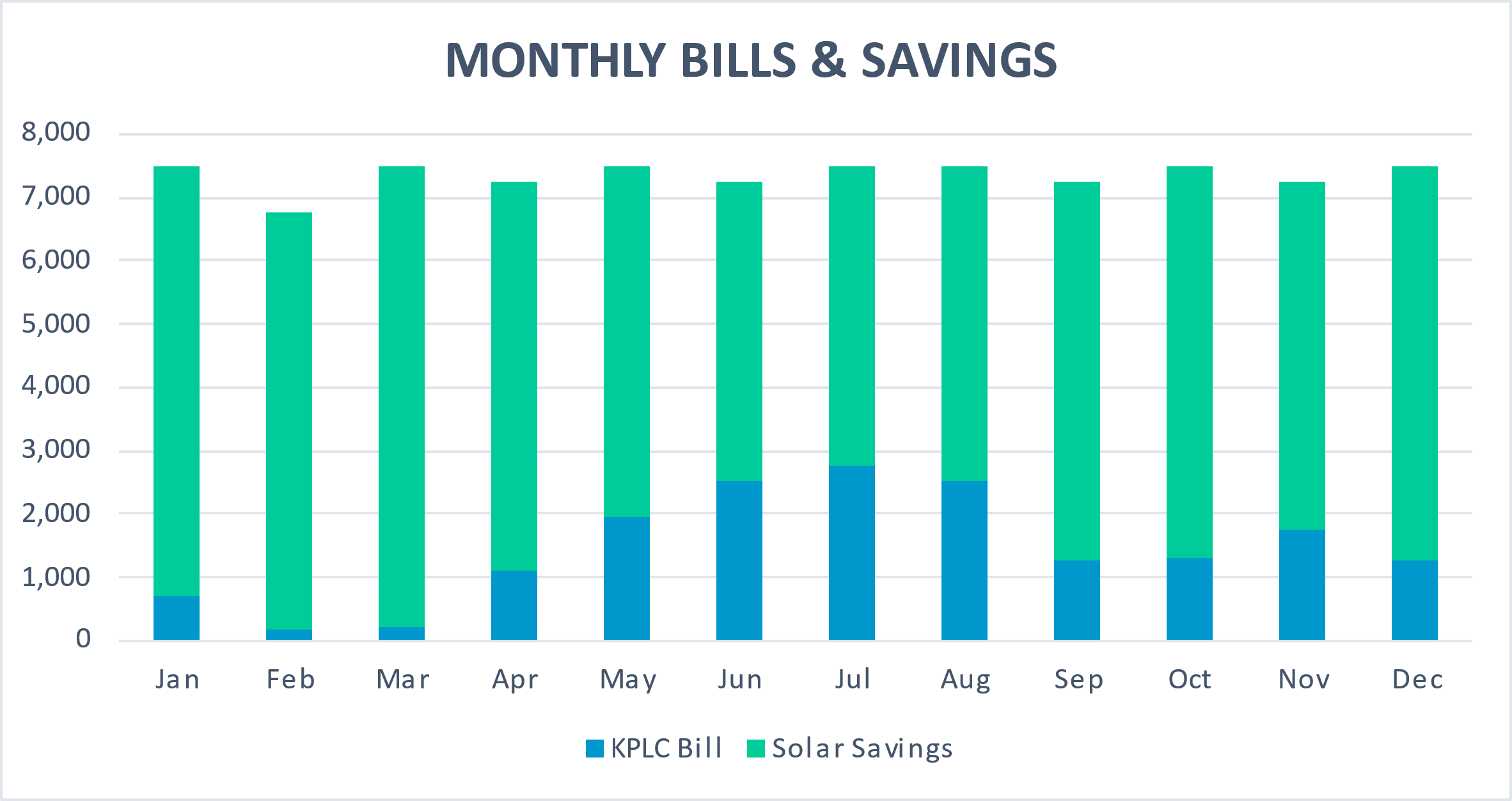
Ready for a Home Solar System?
Find out more about our residential solar system by contacting us today!



